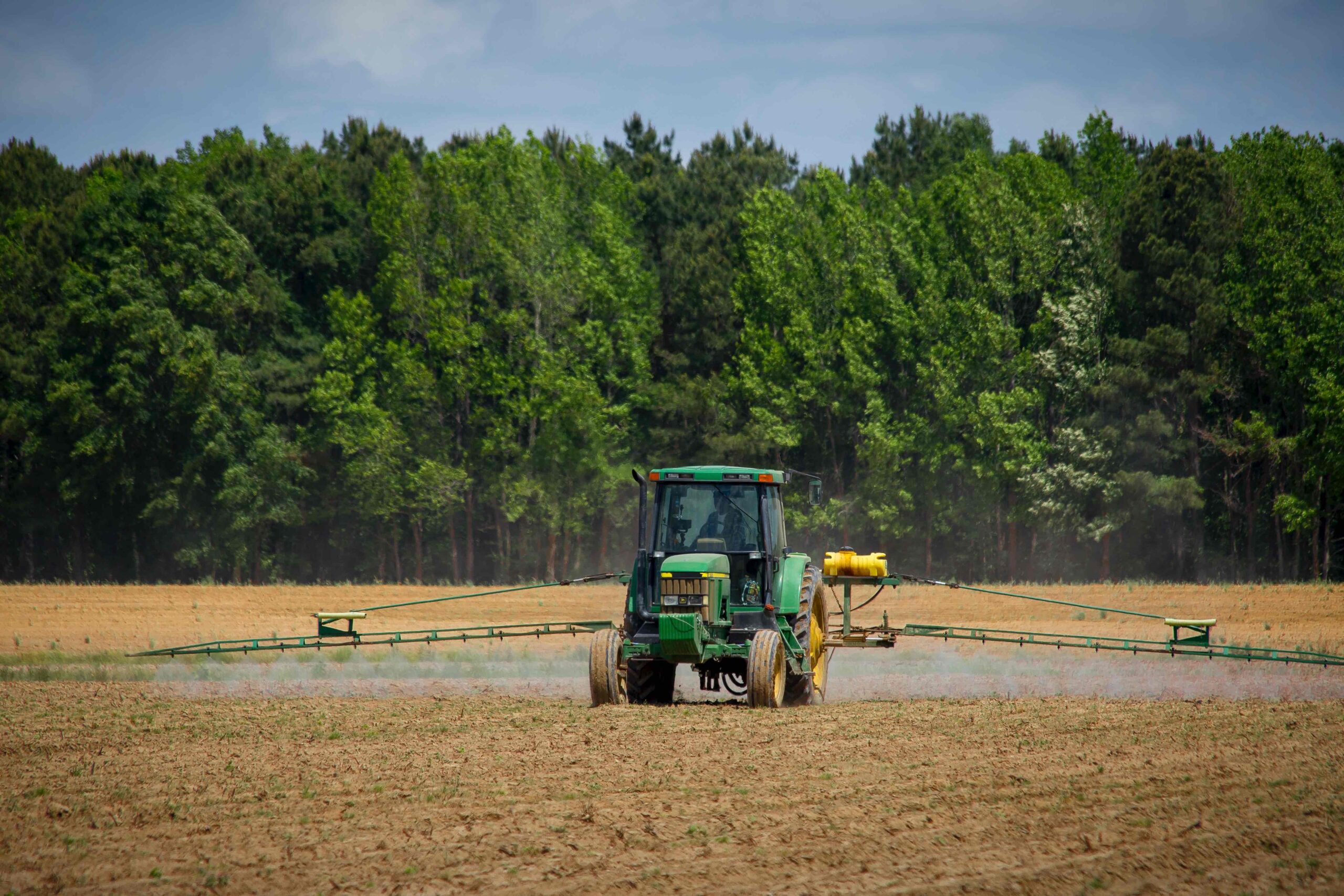Agriculture is considered a stressful profession, not just because of the complexity of decisions that must be made to successfully run a farm or ranch operation but primarily because there is uncertainty. Whenever uncertainty is involved in the farm business, risks must be taken.
There are five main areas of risk in agriculture: production, marketing, financial, legal, and human. The ability to identify risks in agriculture is the first step in managing those risks.
Production risk is first because it involves the primary livelihood of the agricultural operation. Production risk impacts the ability to produce a crop, raise livestock and poultry, or provide a service. Production risk occurs because of the uncertainty of weather events, pest (weed, disease, or insect) problems, and the availability of inputs – from fertilizers to seed to production technologies.
The second type of risk is marketing. Marketing risk brings the price component into play. Thinking back to when we took basic economics, we learned farmers were price takers who produce similar products. For example, a bale of cotton on your farm is not much different than a bale of cotton in the next county or neighboring state. Furthermore, the prices of agricultural products and inputs are impacted by things happening nearby and globally. Two recent examples include 1) the Covid pandemic, which caused prices to drop for many inputs and commodities, and 2) the war in Ukraine drove prices for some commodities like wheat up, as well as increased in the cost of fertilizer and fuel. These events were out of the producers’ control and difficult to predict.
The third type of risk is financial. Financial risk involves the ability of the operation to cash flow and gain access to capital to maintain and expand the operation. In today’s environment, financial risk is impacted by inflation and interest rates. Inflation makes inputs “more expensive” to buy, and consumers are unable to purchase as much with their dollar. In addition, the Federal Reserve has increased interest rates to try to get inflation in check. Higher interest rates result in a higher cost to borrow funds. Farmers are seeing higher interest expenses, even without expanding their operations.
The next area of risk is legal. Legal risk includes the knowledge of, and compliance with, regulations and laws related to the production and marketing of agricultural products and services. A recent example has been with the ability to apply dicamba herbicides which are regulated by the United States Environmental Protection Agency. Although laws vary by state, any certified applicator who plans to apply dicamba herbicides must be trained specifically on their application to ensure label compliance and stewardship. This training must be completed annually and prior to the use of any dicamba herbicides. Legal risk also encompasses the other two areas of risk: financial (requirements to follow the terms of debt) and human (labor rules and regulations). Those who do not comply with laws and regulations will be subject to liability. Liability occurs when a person or entity is held legally responsible for any potential damage or losses that result from the non-compliance.
The final area of risk is human. Although listed as the final area of risk, the figure shows it as the topmost circle in the stack of risk circles – meaning it is one of the most important areas of risk. Human risk involves the people of the agricultural operation, from management to employees to future heirs. Human risk includes the health and well-being of the people who maintain the day-to-day operations. It should also include plans to transition the operation if a change in management were to occur.
For more information on risk in agriculture and how to manage it, refer to the handbook linked in the resources, titled: “Introduction to Risk Management. Understanding Agricultural Risks: Production, Marketing, Financial, Legal, and Human.”
Five Types of Risk in Agriculture

Resource: Crane, L., G. Gantz, S. Isaacs, D. Jose, and R. Sharp. “Introduction to Risk Management. Understanding Agricultural Risks: Production, Marketing, Financial, Legal, and Human.” Extension Risk Management Education Programs and USDA, Risk Management Agency. Handbook Second Edition, 2013. http://extensionrme.org/Pubs/Introduction-to-Risk-Management-ENGLISH.pdf
Source: “Dicamba Training Reuirements – Frequently Asked Questions.” https://www.epa.gov/ingredients-used-pesticide-products/dicamba-training-requirements-frequently-asked-questions#additional-training. United States Environmental Protection Agency. Updated December 5, 2022. Accessed April 21, 2023.
Smith, Amanda R. “The Five Types of Risk in Agriculture.” Southern Ag Today 3(17.3). April 26, 2023. Permalink
Photo by PUSCAU DANIEL FLORIN: https://www.pexels.com/photo/gray-asphalt-road-in-between-brown-orange-leaf-trees-during-daytime-217114/

